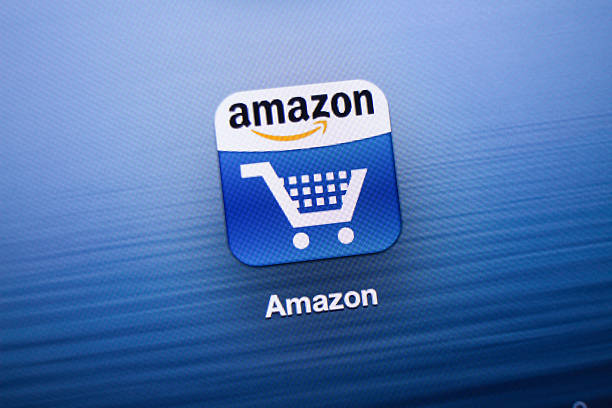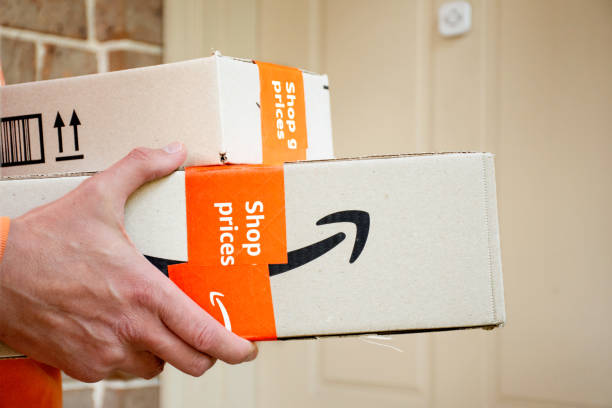As one of the largest e-commerce platforms in the world, Amazon has become a key player in the global marketplace.
For sellers, Amazon represents an incredible opportunity to reach millions of potential customers and grow their business. However, navigating the Amazon marketplace can be a challenge, and there are many questions that sellers may have as they work to optimize their listings and increase their sales.
In this article, we will answer some of the most commonly asked questions by Amazon sellers, providing valuable insights into the Amazon ecosystem and offering practical advice for those looking to succeed on the platform.
Do You Need an LLC to Sell on Amazon?
No, you don’t necessarily need an LLC (Limited Liability Company) to sell on Amazon. In fact, many Amazon sellers operate as sole proprietors without forming an LLC or any other formal business entity.
However, it is important to note that forming an LLC can provide certain benefits, such as personal liability protection and tax benefits, that may be advantageous for your business.
Additionally, if you plan to sell a significant amount of products on Amazon or run a larger operation, forming an LLC may be necessary to meet Amazon’s seller requirements and avoid potential legal issues.
Which is the Best Entity for Your Amazon FBA Business?
Choosing the right entity for your Amazon FBA business depends on various factors, including your business goals, liabilities, taxes, and ownership structure. Generally, there are four main types of entities that you can consider for your Amazon FBA business:
- Sole Proprietorship: This is the simplest and most common entity for small businesses. It involves operating the business as an individual without any separate legal entity. In this case, you will report all business profits and losses on your personal tax return, and you will be personally liable for any business debts or legal issues.
- Limited Liability Company (LLC): An LLC is a separate legal entity that provides personal liability protection for the owners. It also offers tax flexibility, as you can choose to be taxed as a sole proprietorship, partnership, or corporation. An LLC is a popular choice for Amazon FBA businesses due to its flexibility and liability protection.
- S Corporation: An S Corporation is a type of corporation that provides personal liability protection for the owners and also allows for pass-through taxation. This means that the profits and losses of the business are reported on the owners’ personal tax returns. An S Corporation is suitable for larger Amazon FBA businesses that have multiple owners.
- C Corporation: A C Corporation is a separate legal entity that provides personal liability protection for the owners. It also allows for the issuance of stock and other ownership interests, making it a suitable entity for businesses planning to raise capital through investments. However, C Corporations are subject to double taxation, where the corporation pays taxes on its profits, and the owners also pay taxes on their share of the profits.
In short, the best entity for your Amazon FBA business depends on your business goals, liabilities, taxes, and ownership structure. You may want to consult with a business attorney or a tax professional to help you make an informed decision.
How do I optimize my Amazon product listing?
Product listings are the backbone of your Amazon sales strategy, so it’s important to make sure they are optimized for success. To do this, focus on creating clear, concise product titles that include relevant keywords, bullet points that highlight key features and benefits, and detailed product descriptions that provide all the information a customer needs to make an informed purchase decision. Additionally, make sure to include high-quality product images that showcase your product in the best possible light.
How do I choose the right keywords for my Amazon product listing?
Keywords are critical to Amazon SEO, and choosing the right ones can make a huge difference in your sales performance. To find the right keywords, start by conducting thorough keyword research to identify the most relevant and highly searched terms for your product. Use these keywords strategically in your product titles, bullet points, and descriptions, and consider using Amazon’s Keyword Research tool to find additional keyword ideas.
How do I optimize my Amazon Sponsored Products campaigns?
Sponsored Products is Amazon’s pay-per-click (PPC) advertising program, which allows sellers to promote their products at the top of Amazon search results. To optimize your Sponsored Products campaigns, focus on creating highly targeted ad groups, using relevant keywords and bidding strategically to maximize your ROI. Additionally, regularly monitor your campaigns to identify areas for improvement and make adjustments as needed.
How can I increase my Amazon product reviews?
Product reviews are critical to success on Amazon, as they help to build trust and credibility with potential customers. To increase your reviews, focus on providing excellent customer service and follow-up support, as well as soliciting feedback from your customers through follow-up emails or requesting reviews through Amazon’s Request a Review feature.
How do I deal with negative Amazon product reviews?
Negative reviews can be frustrating, but it’s important to respond to them professionally and proactively. Address any customer complaints or concerns, and offer solutions or compensation if necessary. Additionally, use negative reviews as an opportunity to identify areas for improvement in your product or service and make necessary changes to prevent similar issues in the future.
How do I handle Amazon product returns?
Returns are an inevitable part of e-commerce, and it’s important to have a clear and efficient return policy in place. Make sure to clearly communicate your return policy to customers, and provide clear instructions for initiating returns. Additionally, consider using Amazon’s automated returns process to streamline the process and provide a better customer experience.
How do I deal with Amazon product hijackers?
Product hijackers are other sellers who try to sell counterfeit or unauthorized versions of your products on Amazon. To protect yourself from hijackers, consider using Amazon’s Brand Registry program to register your brand and gain additional control over your product listings. Additionally, regularly monitor your listings and report any unauthorized sellers to Amazon’s Seller Support team.
How can I optimize my Amazon product pricing?
Pricing is a critical factor in Amazon sales success, and it’s important to stay competitive without sacrificing profit margins. To optimize your pricing, consider using automated repricing tools that adjust your prices in real-time based on market conditions and competitor pricing. Additionally, monitor your sales and adjust your pricing strategy accordingly to maximize profitability.
How do I handle Amazon product ranking fluctuations?
Amazon product rankings can fluctuate frequently, and it’s important to understand the factors that can impact your product’s ranking. To maintain a consistent ranking, focus on optimizing your product listings, using relevant keywords, and providing excellent customer service. Additionally, consider running promotional campaigns or participating in Amazon’s Lightning Deals program to boost your product’s visibility and sales performance.
How do I protect my Amazon seller account from suspension?
Amazon has strict policies and guidelines for sellers, and violating these rules can result in account suspension. To protect your account, make sure to familiarize yourself with Amazon’s policies and guidelines, and follow them closely. Additionally, regularly monitor your account metrics and address any issues or concerns proactively to prevent account suspension.
How do I optimize my Amazon product images?
High-quality product images are essential for success on Amazon, as they help to showcase your product and build trust with potential customers. To optimize your images, focus on using high-quality, professional-grade images that clearly show your product in the best possible light. Additionally, make sure to follow Amazon’s image guidelines and use all available image slots to provide customers with a comprehensive view of your product.
How do I increase my Amazon product visibility?
Increasing your product’s visibility is key to driving sales on Amazon. To do this, focus on optimizing your product listings with relevant keywords, participating in Amazon’s advertising programs, and engaging with customers through follow-up emails and customer support channels. Additionally, consider participating in Amazon’s Early Reviewer Program, which provides customers with incentives to leave product reviews for new and untested products.
How do I optimize my Amazon product listing for mobile devices?
With more and more customers shopping on mobile devices, it’s essential to optimize your Amazon product listing for mobile viewing. To do this, focus on creating concise and informative product titles, using bullet points to highlight key features and benefits, and providing high-quality images that load quickly and clearly on mobile devices. Additionally, make sure to use Amazon’s mobile preview tool to check how your listing appears on different mobile devices.
How do I handle Amazon inventory management?
Effective inventory management is critical to success on Amazon, as running out of stock can result in lost sales and decreased visibility in search results. To manage your inventory effectively, make sure to regularly monitor your inventory levels, adjust your prices and promotions accordingly, and use Amazon’s inventory management tools to streamline the process. Additionally, consider using Amazon’s FBA (Fulfillment by Amazon) program to outsource your inventory management and fulfillment needs.
How can I grow my Amazon business beyond the Amazon marketplace?
While Amazon can be a powerful platform for e-commerce success, it’s important to diversify your sales channels and grow your business beyond the Amazon marketplace. To do this, consider creating your own e-commerce website or selling through other marketplaces like eBay or Walmart. Additionally, focus on building your brand and engaging with customers through social media and email marketing to create a loyal customer base that can drive sales both on and off Amazon.
Conclusion
In conclusion, selling on Amazon can be a complex and challenging endeavor, but by understanding the key factors that impact your sales performance and taking a strategic and proactive approach to optimization and growth, you can succeed on this powerful e-commerce platform.
By addressing the most commonly asked questions by Amazon sellers and providing practical advice and insights, this article can help you navigate the Amazon ecosystem and achieve success in your Amazon sales journey.



